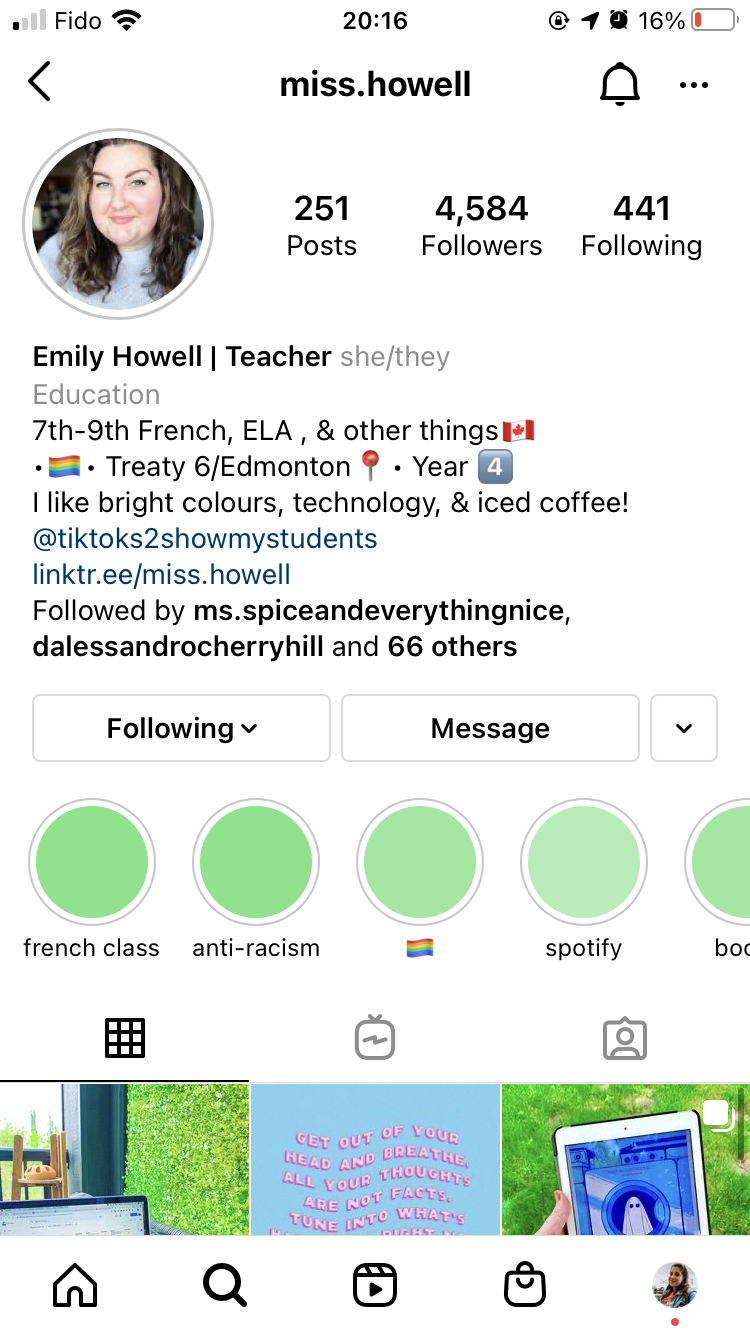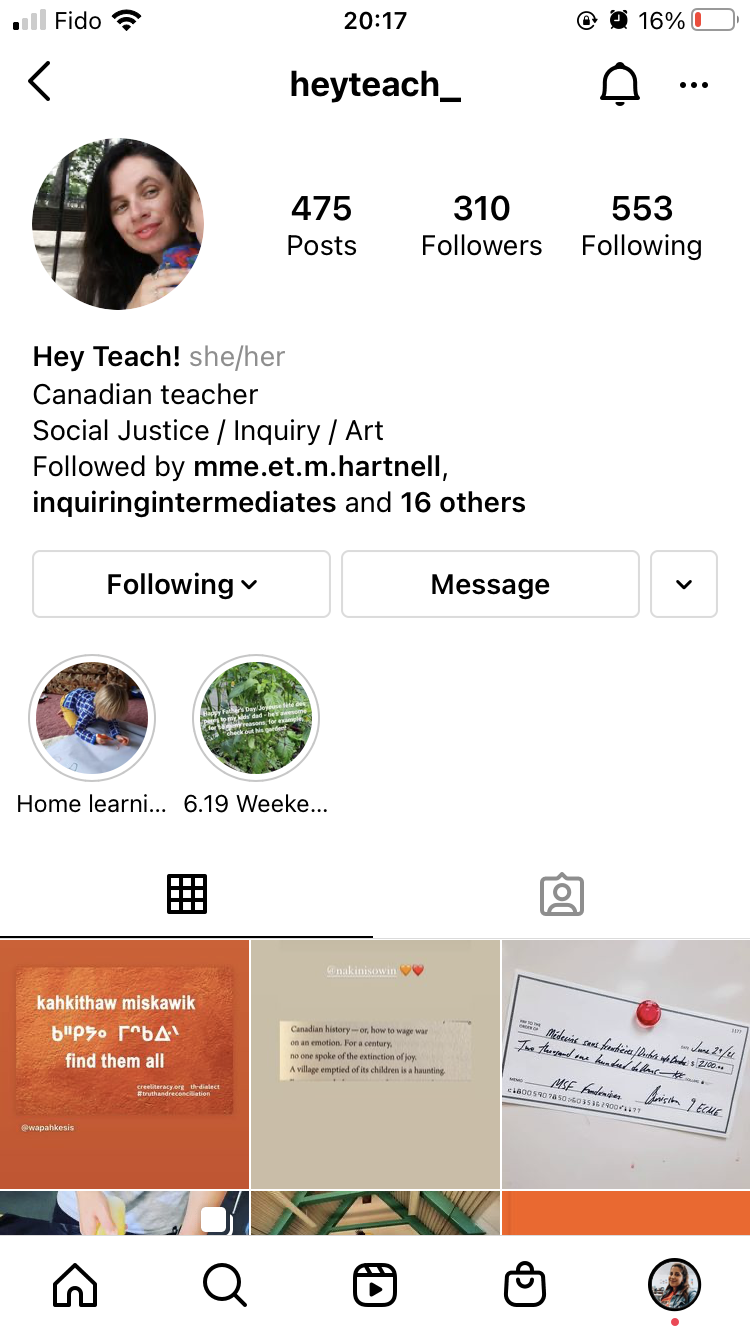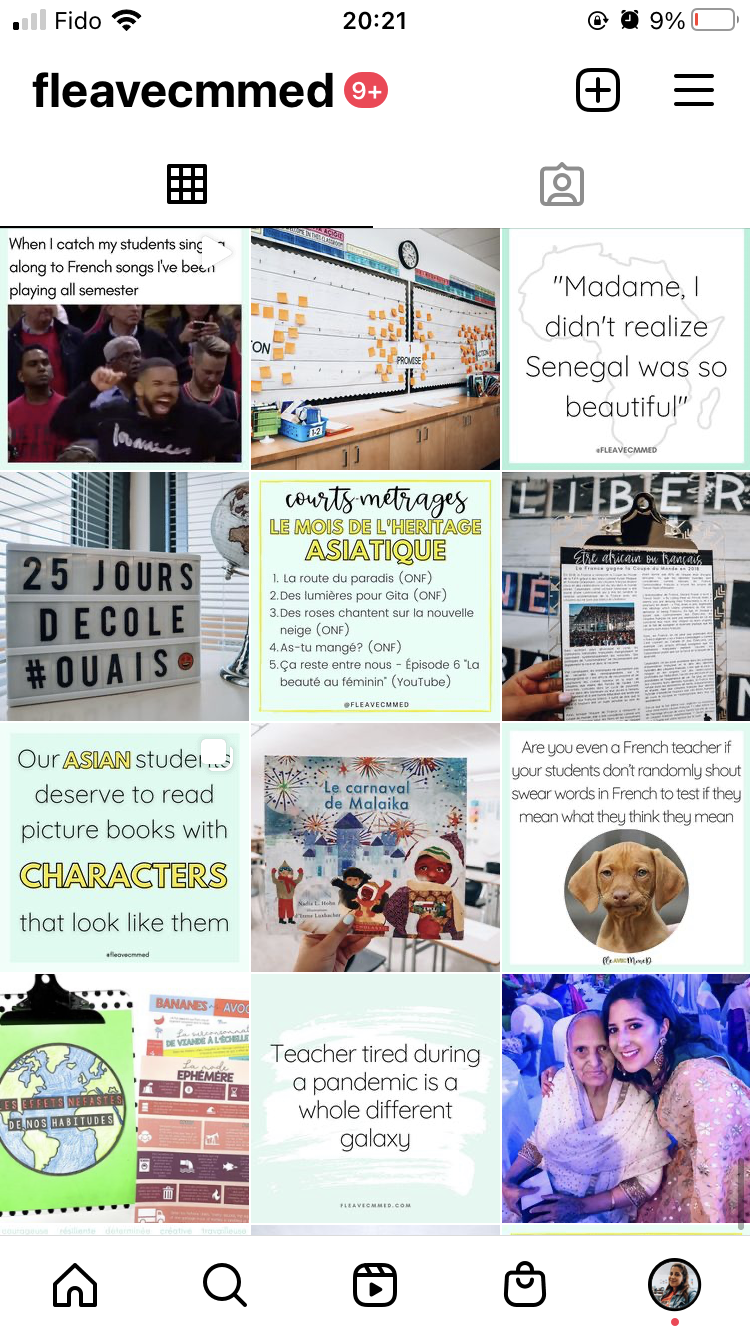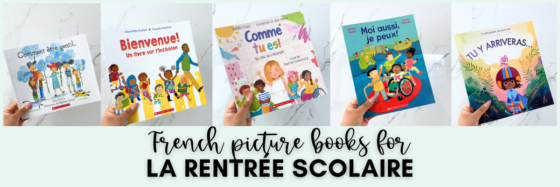
Picture this, you are a first-year Core French teacher. You finally have your own French classroom and you are beyond thrilled to be teaching French! I remember that first year so clearly. I kept asking myself “how am I supposed to teach French?”. I struggled with just about all aspects of teaching Core French and I so wish that I had access to a community of Core French teachers whom I could learn from.
Today, I will share with you 10 of the biggest mistakes I made as a first-year Core French teacher. If you are a new FSL teacher, I hope that my mistakes and lessons serve as a reflection opportunity for your own teaching pedagogy.
Mistake #1 : The French grammar obsession
This one isn’t all that shocking in 2021. Teaching Core French with a heavy grammar focus was something I had to FORCE myself to break away from.
My entire career as a French learner was heavily grammar-based. I felt that students needed French grammar to understand the language and therefore to become proficient.
This, unfortunately, had the opposite effect due to the following reasons :
- students were learning concepts briefly, memorizing them to regurgitate them on a quiz or project. Shortly afterwards, students would forget the concept.
- no, students were NOT more proficient thanks to my awesome grammar lessons. On the contrary, their learning was heavily dependent on me explicitly teaching them.
- students could only reproduce grammar concepts in the exact contexts in which it was taught to them
What I do now :
After my first year, I had to remind myself that babies learn language by speaking, listening and imitating. Not by learning grammar lessons! Now, I teach minimal grammar such as the Super 7 verbs. I also teach a lot of grammar via reading comprehension and listening comprehension.
Basically, I speak a lot of French and we read tons of picture books, French reading comprehension articles and authentic texts!
Mistake #2 : Repeating the exact same teaching practices I had observed as a Core French student
In my first year as a Core French teacher, I taught French exactly how it had been taught to me.
We did dictées, grammar lessons, fill in the lyrics music activities and we used the same textbooks I used in high school. I taught this way because it was the only way I knew how to teach.
I was SO BORED. There was no creativity, no spices and it was all so uninspiring. Now as a fifth-year FSL teacher, I employ very few of these practices that I had observed as a student.
What I do now :
I am definitely not saying that your lesson plans have to be super intricate and complex. As a matter of fact, my most successful lessons have been simple ones that put fun, culture and communication at the heart & centre. No frills, no lace – just all of us learning together!
The best thing I did for my career was joining the Teacher Instagram world and I am a MUCH better FSL teacher now. It isn’t all that surprising that learning from your fellow French teacher friends makes you a much better teacher and I get it now!
Below are two of my favourite Core French teacher IG accounts that you should for sure follow! The third is my own account!
Mistake #3 : Using outdated French textbooks
In my first year, I was pretty much forced to use textbooks. As a result, I used the same textbooks and workbooks from when I was in high school.
They were so old I had to hunt down cassette players to do listening comprehension activities!
These textbooks were mind-numbingly boring and unoriginal. I thought that as a student and my students also did not enjoy them! Breaking away from French textbooks was the BEST decision I have made as an FSL teacher.
What I do now :
I do NOT use textbooks anymore and I do not miss them. I use tons of authentic resources and also resources created by fellow teachers.
These resources put culture and proficiency at the front and center. These French resources are created intentionally and are updated year after year, as opposed to French textbooks.
Mistake #4 : Too many French worksheets
Okay, there is actually NOTHING wrong with a worksheet. Worksheets are not all made equally. For example, worksheets with higher-level thinking questions, critical or creative thinking tasks are incredible opportunities for learning French.
But that isn’t the type of worksheet I was using in my first year of teaching French. Nope! Instead, all of my worksheets were either :
- conjugation practice
- French grammar practice
- vocabulary lists
These types of worksheets did NOT stimulate creative and critical thinking skills in my students’ nor were they valuable OR effective learning opportunities.
What I do now :
Now I do French projects that prioritize francophone cultures, student voice and choice, and language proficiency.
If you are going to use worksheets (I still use them), carefully select the topics, goals and learning strategies. Here are some examples of these types of worksheets :

Not your average French worksheet
Instead of doing “review units” or review worksheets at the start of a school year, skip straight to a “worksheet” like this where students have to recall important concepts they learned the previous year.

We don’t do boring reading comprehension
Let’s take a quick second and appreciate how much more engaging this worksheet looks in comparison to your typical boring French reading comprehension activities.
Photos are essential in helping spark your Core French students’ imagination.
What you don’t see pictured here is the pre-reading and post-reading activities that are equally as creative and engaging.
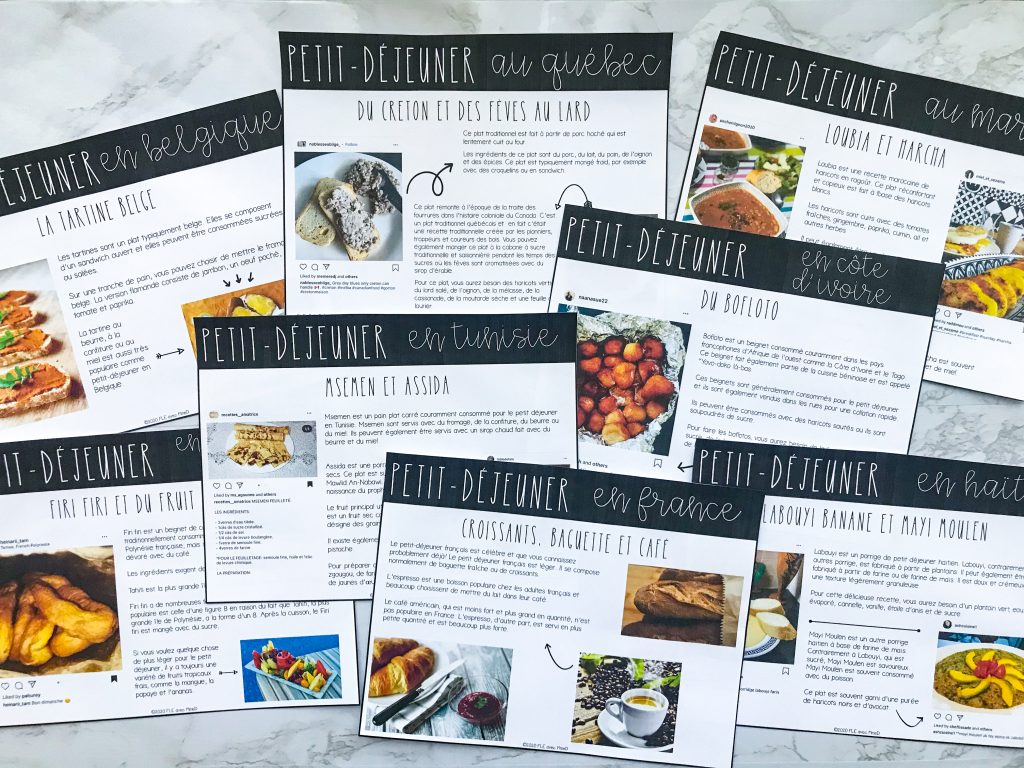
Reading is such an important part of second language acquisition. Reading about francophone cultures makes for such an engaging activity!
In this photo, you see the reading comprehension component of this activity. The other half of this resource requires students to show their understanding of what they read.
See, worksheets do not have to be boring!
Mistake #5 : Focusing more on writing than reading and speaking French
In my first year of teaching Core French, I was hyper-focused on writing activities. I barely spoke any French, did no reading comprehension and did very little listening comprehension. All of our lessons, activities and assessment were writing-based.
What I do now :
As a fifth-year French teacher, my goal is to speak French for at least 90% of the period. I also try to ensure that there is a mix of reading, writing, listening, and reading activities. Sometimes it is hard to squeeze all four in a single period, so I make sure I start with reading the next class if I couldn’t get to it that day.
Mistake #6 : Not prioritizing having fun in French class
Okay, this one is HUGE. If your students suffer in French class and look and sound tortured, we have a problem. Seriously, French teachers are so lucky!
We get to teach about a wide variety of topics and themes and use AMAZING authentic resources. There are so many different ways we can incorporate fun in French class :
- games
- cultural lessons and activities
- French music
- cooking activities
- interactive and hands-on activities
- French films
- fun, entertaining projects
My students most memorable classes :
- field trips to watch a circus performance in French
- French tossing games
- Making crêpes
- Music video projects
- Making ratatouille in class
- Fashion show projects
What I do now :
Mix it up! If your students don’t look like they’re having fun, it’s because they’re probably not. Again, this is the best way to ensure that students continue to sign up for French class!
Mistake #7 : My expectations were higher than my students’ abilities
This one was probably my biggest mistake.
Although I was a former Core French student myself, I expected that my students would pick up the language really quickly. I’m not even sure where this idea came from.
I genuinely expected that my students could write and express themselves at a FAR higher level than what they could actually do! Then, I would sit down to mark their projects and I would that they either A) used Google Translate or B) their writing made no sense and was incomprehensible.
I did very little to practice writing on the topic repetitively. The worst part was that I then corrected EVERY mistake on their assessment because I thought that that was how they’d learn!!
What I do now :
- Repetition is key – whatever goal is (e.g. describe a francophone author) – give your students TONS of opportunities to read descriptions and write descriptions. You should ideally structure as many reading, writing, speaking and listening activities on the concept BEFORE you assign a project
- Don’t mark everything – pick 1 or 2 concepts that where heavily practiced prior to the project. Be okay with imperfection!
Mistake #8 : Francophone cultures were the side dish instead of the main meal
Ever since I was a student teacher, I had always known that I wanted to emphasize francophone cultures and diversity in my French classes. However, the problem was that I just didn’t know how to do that in my first year.
Given my mental roadblock, I ended up not really talking about culture at all.
Nowadays, I make it a point to bring culture into my classroom every single class. Whether it is through music, the lessons we do, the choice of reading comprehension articles, the fun experiential lessons, or the field trips – culture IS the main meal. We learn everything THROUGH culture!
I can truly say that my French classes are so much more enjoyable for my students and myself to teach.
What I do now :
Make it a point to bring culture into your class every single lesson, if you can. French music is the easiest, most convenient and enjoyable way to do this if you need somewhere to begin!
Mistake #9 : Rushing from assessment to assessment
The first three years of my French teacher career were heavy points-based. I felt like I needed to do a certain number of assessments so that my students had a “fair grade” before the end of the term (we had 3 terms in a year). Our grading system was NOT cumulative and was instead on an average system.
It was so exhausting – I was doing assessments for the sake of collecting marks.
We switched to a Standards-Based system recently and a cumulative system. As a result, I realized how ineffective my assessment practices were given that I was focusing on quantity, and not quality.
What I do now :
Focus on quality, instead of quantity. If you feel as though you are constantly spinning in the assessment wheel, it may be time to reflect on your assessment practices and make some changes.
Mistake #10 : I wasn’t loving what I was teaching and how I was teaching French
After my first year, I moved to a school where I was so lucky to join a collaborative department of the most supportive colleagues. I will never forget what my work mom at my new school said to me on my first day, “Pav, whatever you teach – make sure you teach from the heart. Teach what you’re passionate about”.
This stumped me.
I realized that I hated most of what I had taught the previous year. I asked myself what I was passionate about. What could I bring to the table that is unique to me?

The answer was social justice. This was my passion and so I decided to teach French through the lens of human rights.
I have found so much success in this. My students have thoroughly enjoyed the units, lessons and resources. More than anything, they have found my classes to be engaging, meaningful, and relevant to the world they live in. What more could I possibly want as a Core French teacher?
Pictured below is my unit on racism in France.

